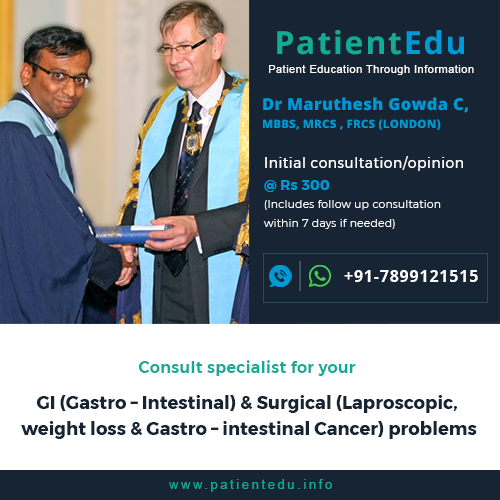Oesophageal-cancer
Oesophageal Cancer
Epidemiology
Carcinoma of the oesophagus is a common, aggressive tumour. Several histological types are seen, almost all of which are epithelial in origin. The vast majority of these tumours will be either squamous cell carcinoma (SCC) or adenocarcinoma (AC).
Over a period of two decades the incidence of SCC has remained relatively stable or declined (particularly associated with smoking and alcohol), whilst there has been a rapid rise in the amount of AC seen, particularly in Caucasian males. This has now overtaken SCC as the most common form of oesophageal tumour in some developed countries.
The majority of cases (80-85%) are diagnosed in less developed countries; most of these are SCC.
Incidence
Carcinoma of the oesophagus is the 8th most common cancer in the world. Annual incidence of 18.0 per 100,000 in men and 8.5 per 100,000 in women. The male:female ratio for the adenocarcinoma subgroup is 52:10.
An average of 42% of cases were diagnosed in people aged 75 years and over, with more than eight out of ten (83%) occurring in those aged 60 and over.
The incidence of oesophageal carcinoma varies considerably with geographical location, with high rates in China and Iran, where it has been directly linked to the preservation of food using nitrosamines. AC is seen more frequently in Caucasian populations, whereas SCC is more frequent in people of African descent.
Hazardous aspects
The use of tobacco and alcohol are strong risk factors for both SCC and AC and have a synergistic effect in this respect for SCC and additive effect for AC. Cigarette smoking is associated with a 10-fold increase in risk for SCC and a 2- to 3-fold increase in risk for AC.
The relative increase in risk caused by smoking remains high for AC, even after 30 years of giving up smoking, but reduces within 10 years for SCC.
Barrett’s oesophagus, which is a precursor of AC.
Chronic inflammation and stasis from any cause increase the risk of oesophageal SCC – eg, strictures due to caustic injury or achalasia.
Tylosis and Paterson-Brown-Kelly syndrome are also associated with an increased risk for SCC. Obesity has been linked with increased risk for AC but reduced risk for SCC. Obesity increases the risk of gastro-oesophageal reflux disease (GORD), in turn increasing the risk of Barrett’s oesophagus.
The relationship between obesity and the rise in AC has, however, been questioned. A review of the Connecticut Tumor Registry data between 1940-2007 showed that the increase in AC seen in the 1960s predated the rise in obesity by a decade. The authors of the review propounded that this may have been linked to a decrease in the incidence of Helicobacter pylori infection or environmental factors.
One Japanese study showed a link between oesophageal cancer and tooth loss.
A family history of hiatal hernia is a risk factor for oesophageal adenocarcinoma, and some people appear to have a genetic predisposition to developing types of gastro-oesophageal cancers.





Comments